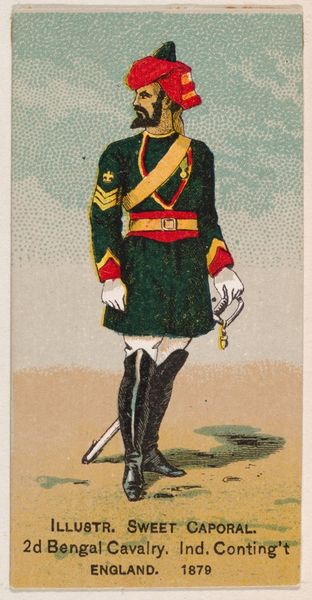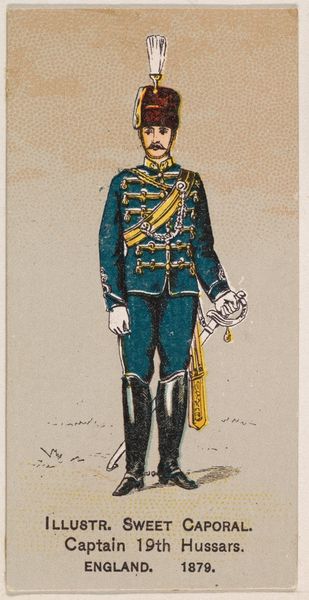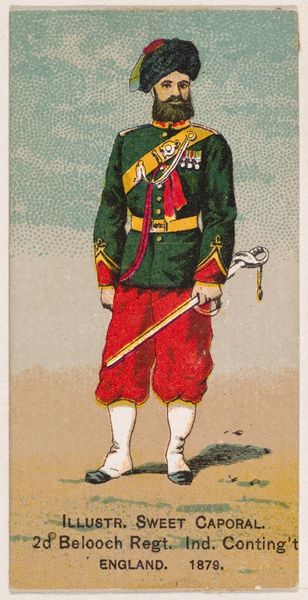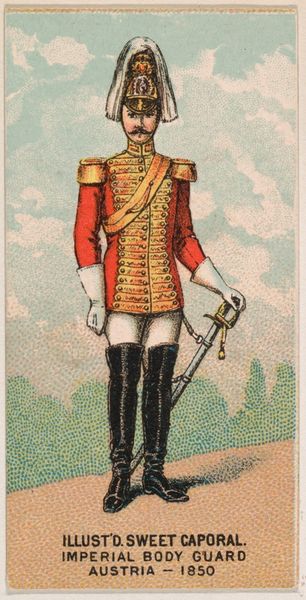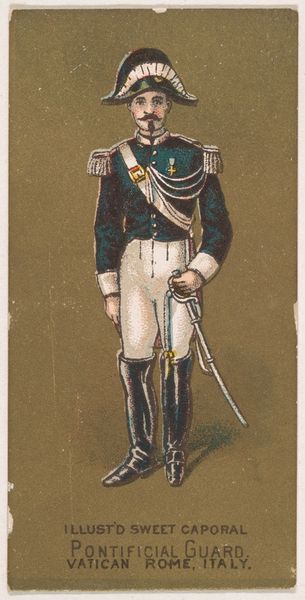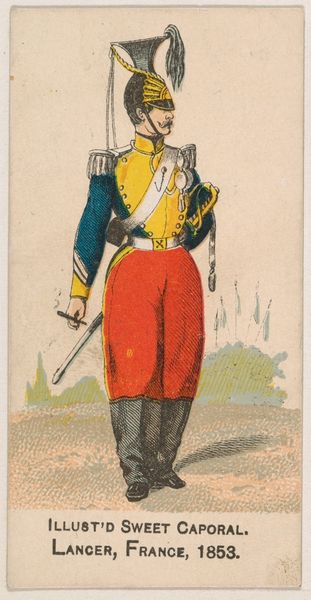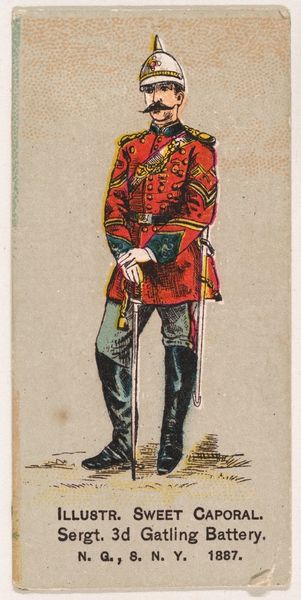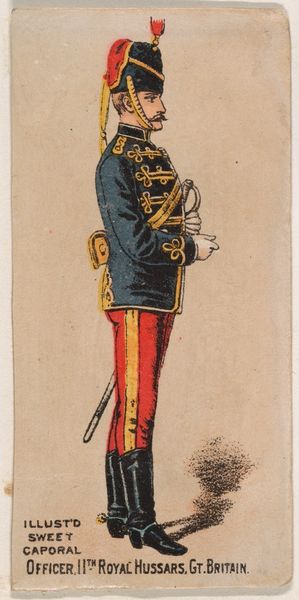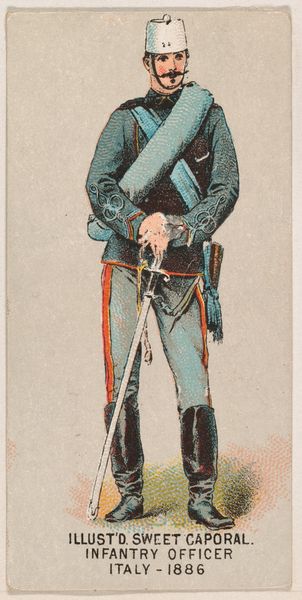
13th Bengal Lancers, Ind. Cont., Engalnd, 1879, from the Military Series (N224) issued by Kinney Tobacco Company to promote Sweet Caporal Cigarettes 1888
0:00
0:00
drawing, coloured-pencil, print
#
drawing
#
coloured-pencil
#
narrative-art
# print
#
coloured pencil
#
orientalism
#
history-painting
#
academic-art
Dimensions: Sheet: 2 3/4 × 1 1/2 in. (7 × 3.8 cm)
Copyright: Public Domain
Editor: Here we have a print from 1888, titled "13th Bengal Lancers, Ind. Cont., England, 1879" by the Kinney Brothers Tobacco Company. It’s quite a formal portrait of a lancer, very meticulously rendered in colored pencil. How do you see this image, given it's made to sell tobacco? Curator: What interests me is how the production of this seemingly innocuous card operates within a complex web of colonial power dynamics. This image isn't just about portraying a lancer; it's about branding. Think about the resources – the paper, the colored pencils, the labor involved in printing – all deployed to promote a product intrinsically linked to colonial trade and consumption. Editor: So you’re saying that even a small card like this embodies a whole system of production and consumption? Curator: Exactly! And who is the intended consumer? The image exoticizes and romanticizes British military involvement in India for a Western audience, bolstering a particular narrative of empire through everyday material culture. The choice of an "Indian contingent" is pointed and meant to showcase how "well" England runs its colonies. The materiality of the image allows it to circulate easily. Editor: It’s fascinating how much is packed into such a small format. What strikes me now is the actual *labor* of its creation – someone drew this, reproduced it, packaged it…it wasn’t magic. Curator: Precisely. Consider how the material processes are inextricably linked to social and political ones. This isn't just a portrait; it’s a product of empire, cleverly disguised as collectable memorabilia. Even now, our act of consuming and dissecting the image is implicated in a similar cycle. What do we make of our present relationship to these images? Editor: I guess that makes me consider *who* owned and consumed them…what that says about taste, status and worldview in the late 19th Century. The humble cigarette card can actually teach you a lot. Curator: Exactly. It highlights the importance of materials, processes, and context in understanding art’s broader social significance.
Comments
No comments
Be the first to comment and join the conversation on the ultimate creative platform.
